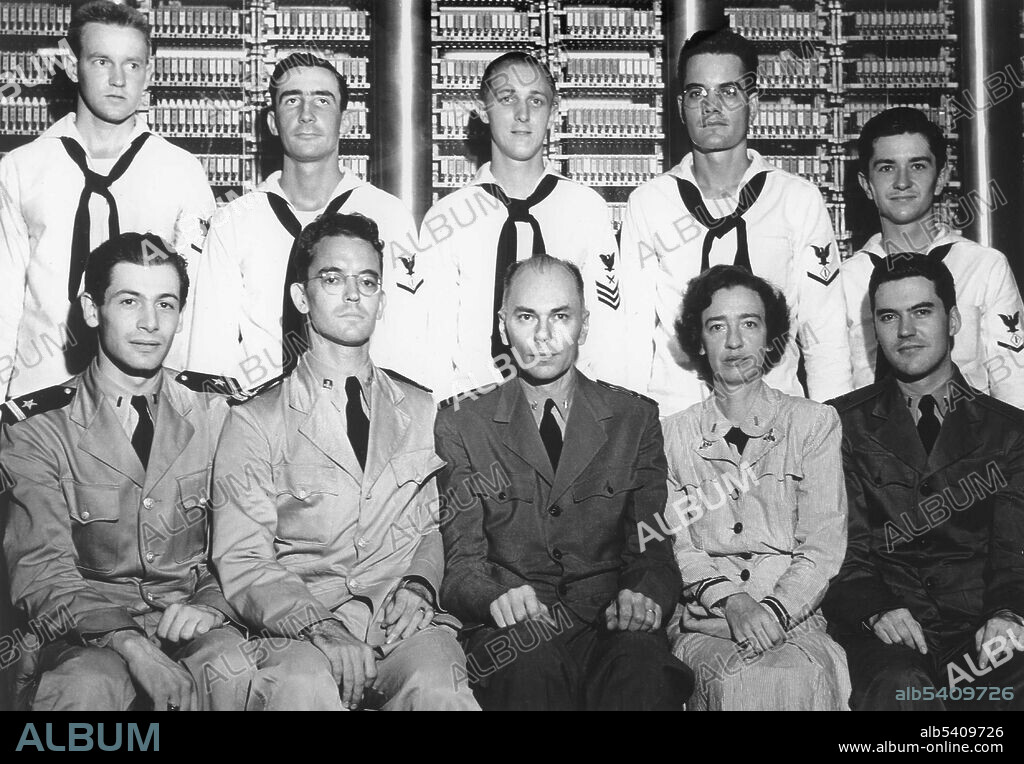alb5409726
WWII, Grace Hopper with Harvard Mark 1 Computer,1944

|
Zu einem anderen Lightbox hinzufügen |
|
Zu einem anderen Lightbox hinzufügen |



Haben Sie bereits ein Konto? Anmelden
Sie haben kein Konto? Registrieren
Dieses Bild kaufen.
Nutzung auswählen:

Titel:
WWII, Grace Hopper with Harvard Mark 1 Computer,1944
Untertitel:
Siehe automatische Übersetzung
Grace Hopper and Howard Hathaway Aiken (bottom center) with unidentified members of the Bureau of Ordnance Computation Project, sitting in front of the Harvard Mark 1 computer. The IBM Automatic Sequence Controlled Calculator (ASCC), called Mark I by Harvard University’s staff, was a general purpose electromechanical computer that was used in the war effort during the last part of WWII. One of the first programs to run on the Mark I was initiated on March 29, 1944 by John von Neumann. At that time, von Neumann was working on the Manhattan project, and needed to determine whether implosion was a viable choice to detonate the atomic bomb that would be used a year later. The Mark I also computed and printed mathematical tables. The Mark I had 60 sets of 24 switches for manual data entry and could store 72 numbers, each 23 decimal digits long. It could do 3 additions or subtractions in a second. A multiplication took 6 seconds, a division took 15.3 seconds, and a logarithm or a trigonometric function took over one minute. The first programmers of the Mark I were computing pioneers Richard Milton Bloch, Robert Campbell, and Grace Hopper.
Bildnachweis:
Album / Science Source / Smithsonian Libraries
Freigaben (Releases):
Model: Nein - Eigentum: Nein
Rechtefragen?
Rechtefragen?
Bildgröße:
4500 x 3124 px | 40.2 MB
Druckgröße:
38.1 x 26.4 cm | 15.0 x 10.4 in (300 dpi)
Schlüsselwörter:
 Pinterest
Pinterest Twitter
Twitter Facebook
Facebook Link kopieren
Link kopieren Email
Email
